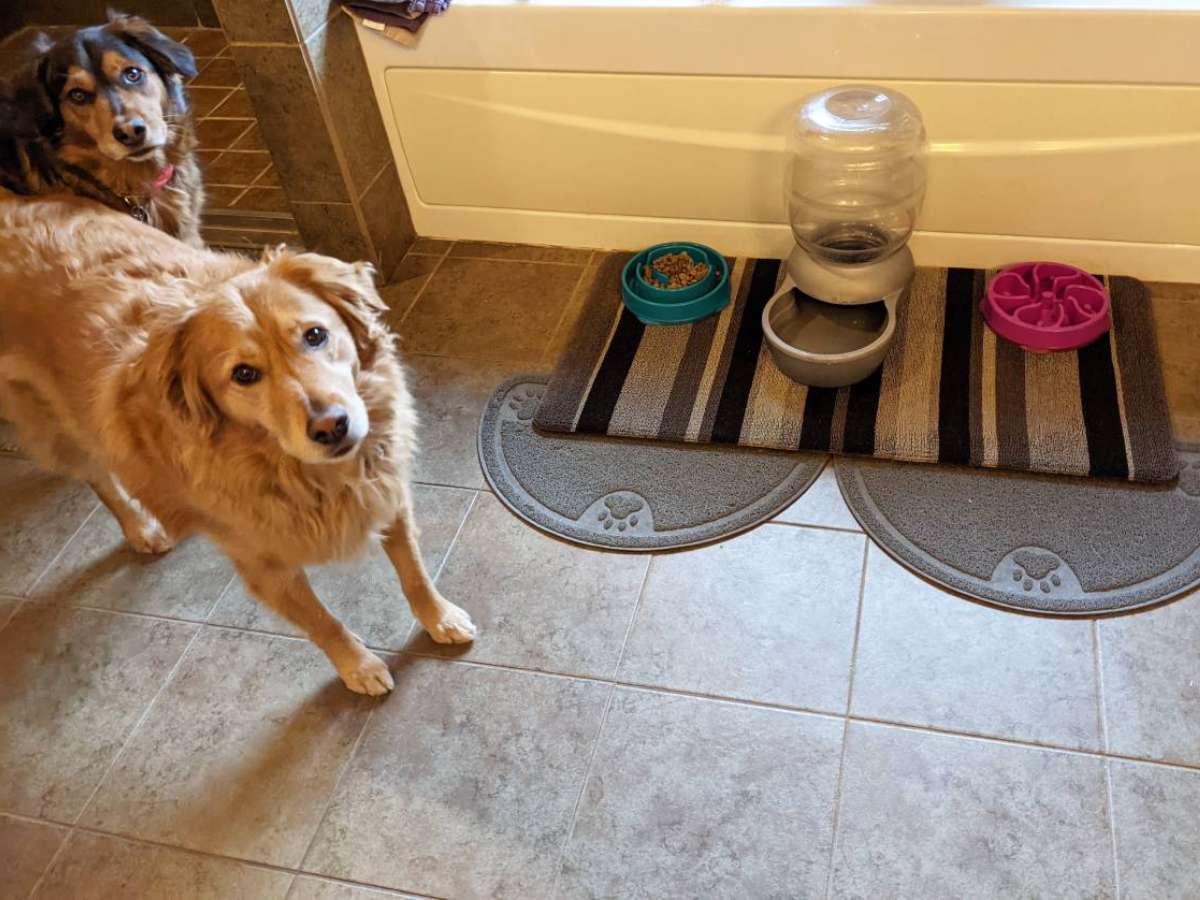When I was young, I came home from school to see a plate full of crumbs on a table and my dog Daisy sitting nearby — staring up at me as if to ask if I had any more.
The plate (before Daisy ate its contents) was full of 24 gingerbread men that my mother had made the night before.
The look on her face and the crumbs around her face made diagnosing the cause of her diarrhea pretty easy.
But it’s not always so easy to find out what’s causing diarrhea in dogs.
If your dog is experiencing diarrhea, it can be symptomatic of many different things.
The Top Causes Of Dog Diarrhea
What the diarrhea means can depend on your dog’s surroundings, stress level, health level, or behavior.
Here are the most common causes of dog diarrhea…
#1 – Dietary Indiscretion
Dogs tend to think it’s a good idea to eat absolutely everything in sight. And most dogs assume that if it can’t be chewed, then it should just be swallowed whole.
This is called dietary indiscretion.
If you have a dog, you likely already know the extent of what we could put on a list like that. (Socks… rocks… sticks… paper plates… garbage… you get the idea!)
Depending on what your dog has ingested, it may irritate their stomach and intestines — causing a reaction.
In many cases your dog will vomit, possibly eliminating most of whatever they’ve ingested. Other times, the item may have to be removed by a vet.
#2 – Food Intolerance
Food intolerance is another common reason for diarrhea.
There are certain food items that are well-known to cause food intolerance in dogs. These should not be given to your dog. In fact, they should be kept completely out of your dog’s reach.
Some foods that don’t agree with all dogs include:
- Pork
- Chicken
- Soy
- Wheat
- Gravies of any kind
- Fats
- Spices
- Fish
- Eggs
- And from my own personal experience… gingerbread men!
(This is by no means an exhaustive list.)
Here’s how to do a quick food allergy test with your dog at home.
#3 – Environmental Changes
By simply changing your dog’s environment can stress them out.
If you take them out to a new house to visit a friend or to an outdoor event in your community and they start to get diarrhea, they might be reacting to changes in their environment.
Or maybe you’ve recently moved and disrupted your dog’s regular routine. This can be confusing and stressful for a dog.
The same is true if you add another dog to your household. Doing so changes your dog’s “rank” in the home and they’re likely to become stressed — at least temporarily.
#4 – Parasites
Parasites can be a pet owner’s worst nightmare.
These include the various types of worms that your dog can contract — such as tapeworms, roundworms, hookworms, and whipworms.
Puppies are prone to Coccidia — a parasite that can be fatal in severe cases.
Giardia, a parasite found in the intestinal tracts in dogs, can become fatal if not treated in a timely manner.
#5 – Parvovirus Infection
If your dog has diarrhea accompanied by vomiting and a fever, it is possible they may have been infected with a Parvovirus infection.
This is an incredibly contagious disease that commonly attacks the intestinal system and less commonly attacks the pulmonary system.
It can be fatal in young pups.
#6 – Bacterial Infection
It’s inevitable that your dog is going to pick up and carry bacteria on a daily basis — this is how a dog’s immune system becomes stronger. (The same is true with daily bacteria and the human immune system.)
However, some forms of bacteria can be deadly for dogs. And since so many of your dog’s behaviors make them susceptible to inhaling or ingesting dangerous forms of bacteria, it’s not always easy to figure out where your dog picked up a certain type of bacteria.
The list of bacteria that can affect your dog is long and includes names that are impossible to pronounce.
Your dog can carry these bacteria in their body without showing any signs, so catching a bacterial infection and treating it in time can sometimes be difficult.
One of the most common bacteria you might notice is Salmonella. Just as it does for humans, it’s a bacteria that will do its worst work on the digestive system — so expect to see symptoms like vomiting, diarrhea, and a fever.
Another common form of bacteria in dogs is Bordetella. You will find this nasty one among dogs who have kennel cough or other respiratory illnesses. Expect to see coughing and wheezing symptoms, along with diarrhea.
Some diseases and parasites can be transmitted through dogs and humans — which makes it important that you are aware of the symptoms in humans, as well as in dogs.
How To Treat Dog Diarrhea
Even if your dog is experiencing only diarrhea, it is best to take them to the vet if it lasts for longer than a couple days.
If your dog has multiple symptoms, then it’s much more urgent to see a veterinarian.
Hopefully, this has been a starting point — so you can begin to address the issue of diarrhea with your dog!
RELATED: 7 Steps To Treat Dog Diarrhea At Home
Our guest writer, Chris is passionate about dogs. He likes to share his personal experiences with his own dog, Kupo. Chris has learned that doing proper research and learning from others’ experiences can be just as important as taking a veterinarian’s advice.





